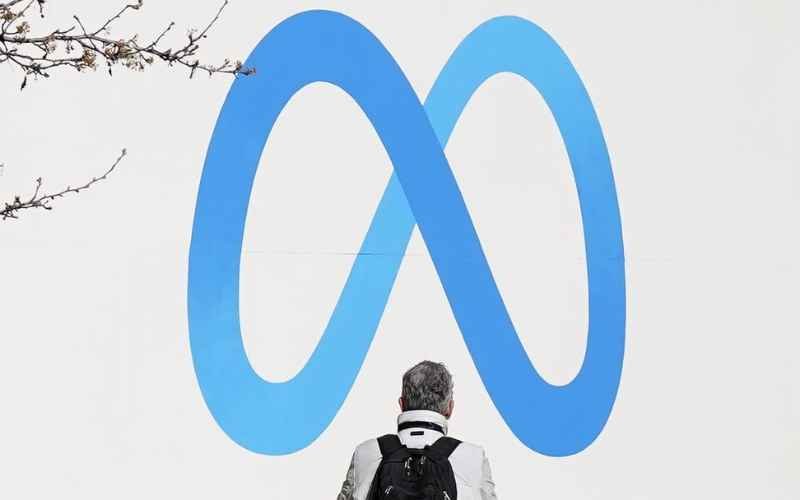In a groundbreaking move, Meta has unveiled its latest innovation: an advanced AI-powered text-to-3D generator. This cutting-edge tool promises to transform the landscape of digital content creation, offering unprecedented capabilities to users across industries.

Unveiling the Future of Content Creation
Meta’s latest AI text-to-3D generator marks a groundbreaking advancement in technology, revolutionizing content creation across various fields. Leveraging artificial intelligence, this tool transforms textual descriptions into intricate 3D models with exceptional accuracy and depth.
For digital marketers, it offers a powerful means to enhance product presentations and advertising campaigns by visualizing concepts in three dimensions. Designers can explore new realms of creativity, bringing ideas to life in immersive formats that captivate audiences. Educators can revolutionize learning experiences by creating interactive educational materials that visualize complex subjects with clarity.
Creative professionals of all kinds now have a versatile tool at their disposal, enabling them to produce compelling visuals and immersive environments with ease. This innovation not only streamlines the content creation process but also expands the horizons of what’s possible in digital storytelling and engagement. As AI continues to evolve, the potential for this technology to shape the future of content creation remains limitless.
How It Works
Meta’s text-to-3D generator operates on cutting-edge machine learning algorithms that drive its ability to convert textual descriptions into realistic 3D models. Here’s a breakdown of how it works:
- Input Textual Descriptions: Users provide descriptive text that outlines the characteristics, dimensions, and other details of the desired 3D object or scene. This could range from simple descriptions to more complex narratives.
- AI Analysis and Conceptualization: The system employs sophisticated natural language processing (NLP) and computer vision algorithms to analyze the text. It interprets the semantic meaning behind the words to conceptualize the shape, texture, colors, and spatial relationships of the 3D model.
- Rendering Lifelike 3D Models: Using the conceptualized data, the AI generates a detailed 3D representation. This includes aspects such as lighting effects, material properties, and environmental factors to create a realistic and immersive visual experience.
- Accessibility and Ease of Use: Unlike traditional 3D modeling software that requires specialized skills and extensive training, Meta’s tool simplifies the process. It democratizes 3D design by allowing users with diverse backgrounds—from marketers to educators—to create compelling visuals without needing deep technical expertise.
- Application across Industries: The versatility of this technology extends its utility across various sectors. Digital marketers can enhance advertising with interactive product demos, educators can create visual aids for teaching complex concepts, and designers can prototype ideas quickly and efficiently.
- Future Potential: As AI continues to evolve, Meta’s text-to-3D generator represents a glimpse into the future of content creation. It not only enhances productivity but also fosters creativity by unlocking new possibilities in how content is conceptualized and presented.
In essence, Meta’s innovation in text-to-3D technology signifies a paradigm shift towards more intuitive and accessible content creation tools, paving the way for richer digital experiences across industries.
Applications Across Industries
Digital Marketing and Advertising: Meta’s text-to-3D generator empowers digital marketers to transform textual descriptions of products or services into captivating 3D visuals. This capability enhances advertising campaigns by enabling marketers to create interactive and immersive advertisements. Product features can be showcased in lifelike detail, allowing potential customers to engage with virtual prototypes before making purchasing decisions. The tool also facilitates dynamic storytelling, where brands can craft narratives that unfold in visually compelling ways, boosting consumer engagement and brand recall.
Education and Training: In the field of education, Meta’s technology revolutionizes the creation of learning materials. Educators can leverage the tool to produce interactive 3D models that illustrate complex concepts and historical events. For instance, historical sites can be recreated in 3D, providing students with immersive experiences that enhance their understanding of history. Scientific simulations can be visualized in detail, allowing students to explore abstract theories through interactive models. This approach not only enhances learning engagement but also accommodates different learning styles by offering visual and interactive learning experiences.
Entertainment and Gaming: For entertainment and gaming industries, Meta’s text-to-3D generator accelerates content creation processes. Game developers can quickly prototype environments, characters, and assets by translating narrative descriptions into tangible 3D elements. This speeds up the game development cycle and enhances realism, enriching gameplay experiences for users. Virtual worlds can be crafted with greater detail and intricacy, providing players with visually stunning and immersive gaming environments that feel more lifelike and engaging.
Architecture and Design: In architecture and design, Meta’s tool facilitates the visualization and presentation of concepts. Architects can translate architectural plans and designs into interactive 3D models, allowing clients to explore proposed buildings and spaces in detail before construction begins. Interior designers can showcase furniture arrangements and decor choices in realistic virtual environments, enabling clients to visualize the final look and feel of their spaces. This capability enhances communication between designers and clients, streamlines decision-making processes, and ensures alignment on design visions.
The Future of Creativity
Meta’s AI text-to-3D generator heralds a transformative era for creativity and innovation across industries. As artificial intelligence progresses, its seamless integration into content creation tools like Meta’s represents a paradigm shift in how digital content is conceptualized, designed, and experienced.
Streamlined Workflows: AI-powered tools streamline the traditionally complex processes of content creation. Meta’s text-to-3D generator allows creators to bypass intricate technical barriers by simply inputting descriptive text. This accessibility democratizes creativity, enabling a broader range of professionals—from marketers to educators—to generate sophisticated 3D visuals without specialized training. As a result, creative projects can move from ideation to execution more swiftly and efficiently.
Boundless Imagination: By harnessing AI, creators are liberated to explore unprecedented realms of imagination. The tool’s ability to interpret and translate textual descriptions into intricate 3D models opens up endless possibilities for visual storytelling, product design, educational simulations, and beyond. Creators can visualize abstract concepts with clarity, prototype ideas rapidly, and experiment with different scenarios—all while pushing the boundaries of what is visually and interactively achievable.
Enhanced User Engagement: The integration of AI in content creation not only enhances the quality and realism of digital experiences but also elevates user engagement. Whether through immersive advertisements that allow consumers to interact with products virtually, educational simulations that bring historical events to life, or gaming environments that transport players to fantastical worlds, AI-powered 3D generation enriches user experiences by making them more dynamic, interactive, and memorable.
Future Possibilities: Looking ahead, the evolution of AI-driven content creation tools holds immense promise. As AI algorithms advance, so too will their capacity to understand and interpret human intent and creativity. This evolution could lead to more personalized content experiences, adaptive learning systems that cater to individual needs, and even more lifelike virtual environments that blur the line between reality and digital simulation.
Embracing the Possibilities
Meta’s latest technological leap with the AI text-to-3D generator opens doors to limitless creative expression and innovation across diverse fields. Whether you’re imagining futuristic landscapes, transforming educational materials, or revolutionizing digital advertising, this tool empowers creators to bring their visions to life with unprecedented ease and fidelity.
Futuristic Worlds and Visual Storytelling: Creators can use Meta’s AI text-to-3D generator to envision and render detailed, immersive environments that transport audiences into futuristic or fantastical worlds. By converting textual descriptions into dynamic 3D models, storytellers can craft visually compelling narratives that captivate and engage viewers on a deeper level.
Enhanced Educational Experiences: In education, the tool facilitates the creation of interactive and informative content. Educators can transform textbooks into interactive learning experiences by visualizing historical events, scientific concepts, and complex theories in 3D. This approach not only enhances comprehension but also makes learning engaging and memorable for students of all ages.
Revolutionizing Digital Advertising: For marketers, Meta’s technology represents a paradigm shift in digital advertising. Brands can create immersive product demonstrations and interactive advertisements that allow consumers to explore products in virtual environments. This capability not only enhances consumer engagement but also enables brands to convey product features and benefits more effectively.
Meta’s Vision for the Future: Meta’s commitment to advancing AI-driven technologies underscores its dedication to shaping the future of digital interaction. As the AI text-to-3D generator becomes more accessible and refined, we can anticipate a transformative impact on how content is created, shared, and experienced globally. This tool not only streamlines creative workflows but also fosters innovation by democratizing access to advanced 3D modeling capabilities.
In essence, Meta’s AI text-to-3D generator stands at the forefront of technological innovation, offering unprecedented possibilities for creative expression and digital interaction. As it integrates further into mainstream applications, expect to witness a new era where imagination meets technology to redefine the way we conceive, create, and consume content across industries.
FAQs
- What is Meta’s AI text-to-3D generator? Meta’s AI text-to-3D generator is a cutting-edge tool that converts textual descriptions into realistic 3D models using artificial intelligence.
- How does Meta’s text-to-3D generator work? It works by analyzing descriptive text inputs and using machine learning algorithms to conceptualize and render 3D objects with precision.
- Who can use Meta’s text-to-3D generator? The tool is designed for a wide range of users, including digital marketers, designers, educators, and creative professionals.
- What are the applications of Meta’s text-to-3D generator? It can be used for digital marketing, education, entertainment, gaming, architecture, and design to create immersive and interactive 3D content.
- Is any special software required to use Meta’s text-to-3D generator? No, users can access the tool through Meta’s platform, and it does not require specialized software beyond a web browser.
- Can Meta’s text-to-3D generator create animations? Yes, the tool can generate animated 3D models based on the descriptive text provided, enhancing visual storytelling capabilities.
- Is Meta’s text-to-3D generator easy to use for beginners? Yes, it simplifies the process of creating 3D models, making it accessible even to those without extensive technical knowledge.
- What are the benefits of using Meta’s text-to-3D generator in digital marketing? It enables marketers to create more engaging and interactive advertisements, enhancing consumer interaction and brand storytelling.
- How can educators benefit from Meta’s text-to-3D generator? Educators can use it to create immersive educational materials that visualize complex concepts and enhance student engagement.
- Does Meta’s text-to-3D generator support collaborative work? Yes, it supports collaborative workflows, allowing multiple users to collaborate on designing and refining 3D models.
- Can Meta’s text-to-3D generator be integrated with other platforms or software? Yes, it can be integrated with other tools and platforms to enhance its functionality and interoperability.
- What file formats does Meta’s text-to-3D generator support? It supports various standard 3D file formats, making it compatible with most design and rendering software.
- Is Meta’s text-to-3D generator suitable for creating virtual reality (VR) content? Yes, it can be used to create 3D models for VR experiences, enhancing immersion and realism in virtual environments.
- Does Meta provide tutorials or training for using the text-to-3D generator? Yes, Meta offers resources, tutorials, and documentation to help users learn how to use the text-to-3D generator effectively.
- Can Meta’s text-to-3D generator be used for prototyping new product designs? Yes, designers can use it to quickly prototype and visualize product designs before moving to physical production.
- What are the future developments planned for Meta’s text-to-3D generator? Meta plans to enhance the AI capabilities, improve rendering speed, and expand the tool’s features based on user feedback and technological advancements.
- Is Meta’s text-to-3D generator available for free or is there a subscription fee? Meta may offer different pricing models, including free access with limited features and paid subscriptions for advanced functionalities.
- Can Meta’s text-to-3D generator handle large-scale projects? Yes, it is scalable and can accommodate large-scale projects requiring multiple 3D models and complex designs.
- What are some examples of industries currently using Meta’s text-to-3D generator? Industries such as gaming, architecture, e-commerce, advertising, and education are leveraging the tool for various creative and practical applications.
- How can Meta’s text-to-3D generator contribute to innovation in content creation? By simplifying 3D modeling processes and expanding creative possibilities, Meta’s tool empowers users to innovate and redefine digital content creation across industries.
These FAQs cover a broad range of topics related to Meta’s AI text-to-3D generator, providing comprehensive information for users and potential adopters of the technology.













